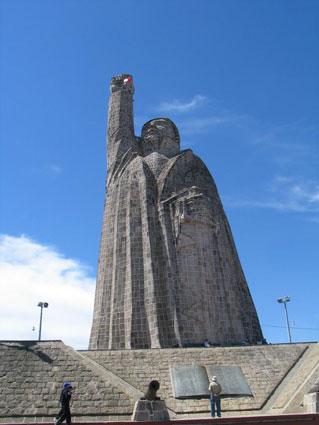It’s been several months ago since I read Erik Erikson’s Young Man Luther. If I don’t blog about something right away, I sometimes forget exactly why I found a certain passage of interest. So I’m just going to dump the rest of my notes here with a few comments. Keep in mind that Erikson is a secular author and many of his ideas are not exactly friendly to orthodoxy. Nevertheless, I appreciate some of the psychological insights.
On indoctrination and why some monks are great men and other monks really pathetic.
Any indoctrination worth its ideological salt also harbors dangers, which bring about the unmaking of some and the supreme transcendence of others.
-p.150
On how the central organized core of a movement can always disavow responsibility for the fringe elements. Think the Taliban vs. most Islamic states or the Christians who murder abortion doctors. The disavowments don’t do anything to make the fringe go away though. They don’t reach below the surface.
As in the case of all terror, the central agency can always claim not to be responsible for the excessive fervor of its operatives; in fact, it may claim it has dissuaded its terrorists by making periodic energetic pronouncements. These, however, never reach the lowly places where life in the raw drives people into being each others’ persecutors, beginning with the indoctrination of children.
-p.182
On the demise of the Roman Catholic church’s dominance due to many, many things. Luther was only a small part of the puzzle.
The masses could participate only as onlookers, as the recipients of a reflection of a reflection. This parasitic ceremonial identity lost much of its psychological power when the excessive stylization of the ruling classes proved to be a brittle defense against the era’s increasing dangers; the plague and syphilis, the Turks, and the discord of popes and princes. At the same time, the established order of material and psychological warfare (always so reassuring a factor in man’s sense of borrowed godliness) was radicaly overthrown by the invention of gunpowder and of the printing press.
-p.186
On why monasticism is probably not the best thing for a young person.
Some monastic methods systematically descend to the frontiers where all ego dangers mut be facd in the raw – were an overweening conscience is appeased through prayer, drives tamed by asceticism, and the pressure of reality is itself defeated by the self’s systematic abandonment of its identity. But true monasticism is a later development and is possible only to a mature ego. Luther knew why he later said that nobody under thirty years of age should definitely commit himself to it.
-p.218
On how life is different for the young person whose thoughts are dominated by theology. I can raise my hand to some of this. It makes childhood shorter for sure.
This integrity crisis, last in the lives of ordinary men, is a lifelong and chronic crisis in a homo religiousus. He is always older, or in early years suddenly becomes older, than his playmates or even his parents and teachers, and focuses in a precocious way on what it takes others a lifetime to gain a mere inkling of: the questions of how to escape corruption in living and how in death to give meaning to life. Because he experiences a breakthrough to the last problems so early in his life maybe such a man had better become a martyr and seal his message with an early death; or else become a hermit in a solitude which anticipates the Beyond. We know little of Jesus of Nazareth as a young man, but we certainly cannot even begin to imagine him as middle-aged.
-p.261
Maybe.
From the oldest Zen poem to the most recent psychological formulation, it is clear that “the conflict between right and wrong is the sickness of the mind.”
-Quoted from Seng-ts’an, Hsin-hsin, Ming, p.263
I loved the last paragraph of this book where the author suddenly brings us into his study overlooking a town in Mexico:
The area of nearby Lake Patzcuaro is dominated by an enormous statue erected on a fisherman’s island. The statue depicts the revolutionary hero Morelos, an erstwhile monk, his right arm raised in a gesture much like Luther’s when he spoke at Worms. In its clean linear stockiness and stubborn puritanism the statue could be somewhere in a Nordic land; and if, in its other hand, it held a mighty book instead of the handle of a stony sword, it could, for all the world, be Luther.
-p.267

